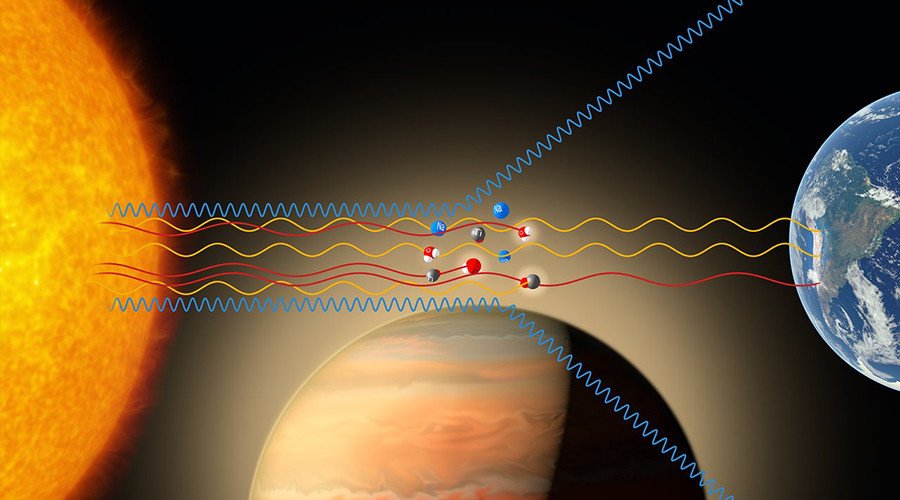‘Inferno world’: Hot Jupiter exoplanet is 4 times hotter than Venus

‘Hot Jupiter’ exoplanet WASP-19B is more than four times hotter than Venus and contains titanium oxide in its atmosphere, according to new information revealed by the European Southern Observatory’s Very Large Telescope.
Details of the exoplanet’s chemical composition, temperature and pressure structure were published by astronomers in the journal Nature, offering unique insight into this inferno like world.
READ MORE: Newly-discovered extremely hot planet may have comet-like tail – study
WASP-19B has about the same mass as Jupiter, but is so close to its parent star that it completes an orbit in just 19 hours.
Its atmosphere is estimated to have a temperature of a scorching 2,000 degrees Celsius. Venus has a surface temperature of 467 degrees Celsius.
Small amounts of titanium oxide, water and traces of sodium were detected in the planet’s atmosphere by ESO scientists.
#ESOCastLight 126: Titanium oxide in exoplanetary atmosphere #BiteSizedAstronomy#4K#UHDhttps://t.co/WI3YImwz7wpic.twitter.com/SWvA70X7iq
— ESO (@ESO) September 13, 2017
“Detecting such molecules is, however, no simple feat,” ESO researcher, Elyar Sedaghati said.
“Not only do we need data of exceptional quality, but we also need to perform a sophisticated analysis. We used an algorithm that explores many millions of spectra spanning a wide range of chemical compositions, temperatures, and cloud or haze properties in order to draw our conclusions.”
Titanium oxide is known to exist in the atmospheres of cool stars and is rarely seen on Earth. In the case of WASP-19B it plays the role of heat absorber - similar to the ozone’s role in Earth’s atmosphere.
“If present in large enough quantities, these molecules prevent heat from entering or escaping through the atmosphere, leading to a thermal inversion — the temperature is higher in the upper atmosphere and lower further down, the opposite of the normal situation.”

The ESO observations were collected over a period of more than one year using the FORS2 instrument on the Very Large Telescope to analyse light as the planet passed in front of its parent star.
During this process some of the starlight passes through the planet’s atmosphere and leaves “subtle fingerprints in the light” that eventually reaches Earth.
READ MORE: Hubble spots pitch-black exoplanet so hot it ‘eats light’ from nearby star












